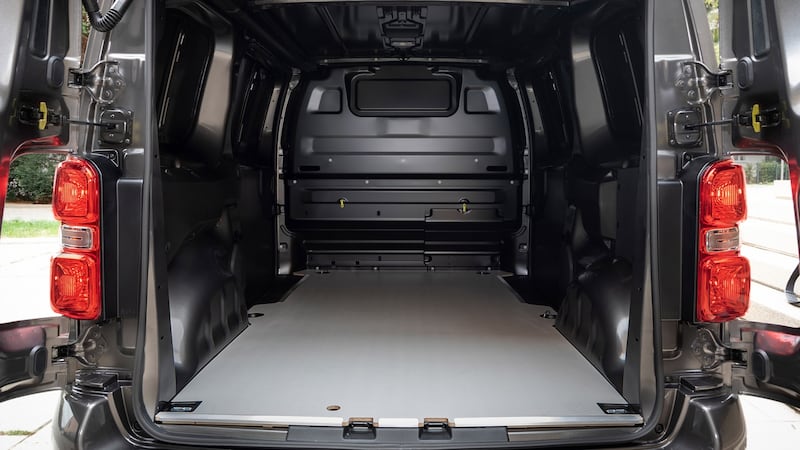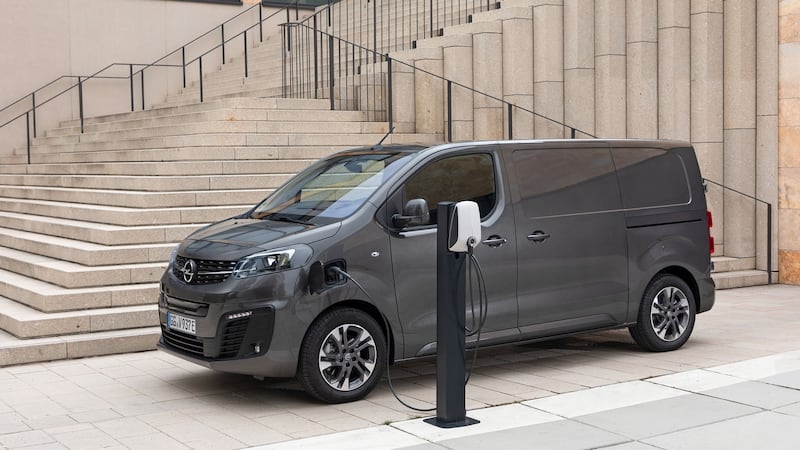We all, surely, now know of the phenomenon of “range anxiety”? That sweaty, prickly feeling of driving a battery-powered electric car and not being entirely sure if you have enough range left to reach your destination, or even the next charging point.
It has, for the most part, become less and less of an issue. Cars with bigger, more efficient batteries and the slow-but-steady rollout of public fast-charging points mean that you can, for the most part, expect to complete a given journey in an EV with ease (assuming that you can charge at your destination, of course. .).
Inevitably, though, at times, range anxiety comes rushing back. The needle on the battery gauge drops a little further south than you were expecting, and suddenly you’re doing your best Tom-Hanks-in-Apollo-13 impression, making desperate mental calculations of charge versus performance versus distance. It’s all about the amps, and never was a truer word spoken.
So it was that I found myself in failure is not an option mode, stretching the resources of my mental slide-rule to constantly work out if I had enough juice left to get to where I needed to be.

800km round trip
With the inter-county travel restrictions being lifted, I'd been drafted in to help an elderly relative shift some furniture from her old house. This would involve me getting to Waterford, back to my home in Belfast, and back down from there to Dublin. A roughly 800km round trip, and because beds don't fit into cars (well, not without a hacksaw. . .) a van would be needed.
The nice people at Opel came up trumps, passing me the keys to a new Vivaro-e. Now, I've always liked driving vans. As someone who grew up on the very worst (best?) of eighties TV, there's still a part of me that equates driving a van with being in the A-Team.
Sadly, this new Opel (twinned with various other Citroen, Peugeot, and Toyota models) didn't have a swivel-mounted M60 machine gun in the back (probably just as well. . .) but it did have a 2.8m cargo bay – easily enough to swallow a couple of single bed and attendant mattresses.
It also had a battery. Mounted under the loadbay floor, so as not to interrupt cargo space, the Vivaro-e does away with a tank of diesel and instead uses a 50kWh battery pack, which powers a 100kW electric motor, driving the front wheels. If I tell you that equates to 136hp, and you think that sounds familiar, well you’re right – it’s exactly the same battery and motor combo that Opel offers in the Corsa-e hatchback and the just-arriving Mokka-e crossover.
There is a version with a larger 75kWh battery, which I guess would have been rather more road-trip apposite, but hey, what’s an epic adventure without a challenge? The 50kWh Vivaro-e boasts a 231km one-charge range, according to the WLTP test, so having glanced at the Zap-Map app on my phone, I figured I could bounce pretty easily from one charging point to another.
As it turned out, I was right. But it took a little longer than I reckoned. . .
Leaving Dublin with a full battery, the first thing that became clear was that speed was not going to be my friend. Keep the Vivaro-e between 100km/h and 110km/h and the balance between kilometres covered and battery drained sits in a relatively comfortable zone.
At that kind of rate, on motorways and dual carriageways, you won't get the full 231km, but at an average electric consumption rate of 25kWh/100km, you should get close to 200km, which is decent. Up the speed to the legal limit though, and consumption shoots up as does your anxiety level. Better to go slow, so. What was that Roger Penske said about finishing first meaning first you had to finish?
I can imagine many a van driver complaining bitterly about such speed restrictions, as well as the limited opportunities to attach oneself to the rear bumper of another car and attempt to intimidate them out of the way. All I can say is that it proved a really rather relaxing way to travel. With the weather settled in to a little bit of balmy sunshine, my elbow propped on the open window (no air conditioning, that's bad for range too) and some good tunes on the stereo (there's a neat, small touchscreen with Apple CarPlay in this Sportive-spec van), the kilometres rolled by in pleasant repose.
A quick stop at the 50kWh ESB e-Cars charger in Knocktopher had the battery topped up again (in far less time than the pessimistic on-board computer reckoned it would take) and we rolled silently into Waterford city. That's the peachiest bit of driving an electric van – no diesel clatter nor grinding gears, just a quiet hum and a look of pleasant surprise on the faces of pedestrians as they realise what's missing from their soundscape. I could get used to this.
Loaded up with beds, and with another top-off of the battery at Knocktopher on the way out of Waterford, and I hoped to be able to get around Dublin and the M50 motorway before charging again.

Sadly, the battery gauge (which is a neat and precise analogue dial on the Vivaro-e, rather than an unclear digital display) decided that wasn't going to happen, and so I had to pause a while at the Ionity 350kW rapid charger at Kill. With a maximum charging speed of 100kW, the Vivaro-e inhales a charge pretty quickly, so I was soon back on the road, but now there was a problem.
To maximise range, you really need to run the van in Eco mode, which, among other effects, limits the heating and air conditioning system. Basically, it turns it off. Earlier, with the sun beating down that wasn't a problem, but now night had drawn in and I was getting chilly. Downright frozen in fact, and the balmy weather earlier on had meant that I hadn't packed a jumper. So I was forced – shades of Tom Hanks again – to choose between warmth and range, and I'm ashamed to say I chose warmth. It meant I'd definitely need a charge again before home – at the ESB e-Cars 50kWh charger at Castlebellingham – but the wuss that I am, I don't think I'd have made it without the cabin heat on.
Stretching capabilities
The next morning, the Vivaro needed only a quick top-up on the way back down – Castlebellingham again – to make it back to Dublin with ease (and thankfully, a little more sunshine to ensure that I didn’t have to crank up the heat again).
So, what have we learned? Well, we’ve learned that the 75kWh version of the Vivaro-e would have been much more suitable for this job, quelle surprise (although being as this is an Opel, perhaps we should say ‘Was fuer eine Ueberraschung’).
With the smaller battery, we were stretching capabilities to the limit, and carrying out tasks that a professional operator would likely not do. Such vehicles are bought and used more carefully, and in its intended role of short-hop deliveries the Vivaro-e excels. It’s easy to drive, comfortable (even on long journeys), and has a usefully square, tall, loadbay (plus sliding doors on both sides, which helps). It’s also fast to charge when you need it to be.
The downsides? A round trip that should have taken about 5½ hours ended up taking more like seven or eight, thanks to my personally enforced speed limit and the stops for charging.
I guess, being charitable, you could say that it was good I was taking regular stops for coffee. The good news is that electric vans, on this basis, work and work well, but you need to match the vehicle’s capabilities carefully to your needs before making any purchasing decisions. Oh, and it’s hard to pretend to be BA Baracus when limited to 100km/h.












